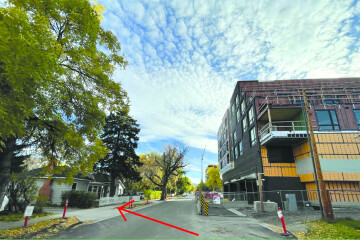Zoned For Tear-Down
A recent real estate listing was brought to my attention; the description was interesting in how the property was presented, and raises questions about potential impacts on the character of our neighborhoods. It focused on the lot size and location, as well as the zone, which is R-4. The fact that there is a home currently on the property was mentioned in a way that made it clear this is not the “highest and best use” of this parcel.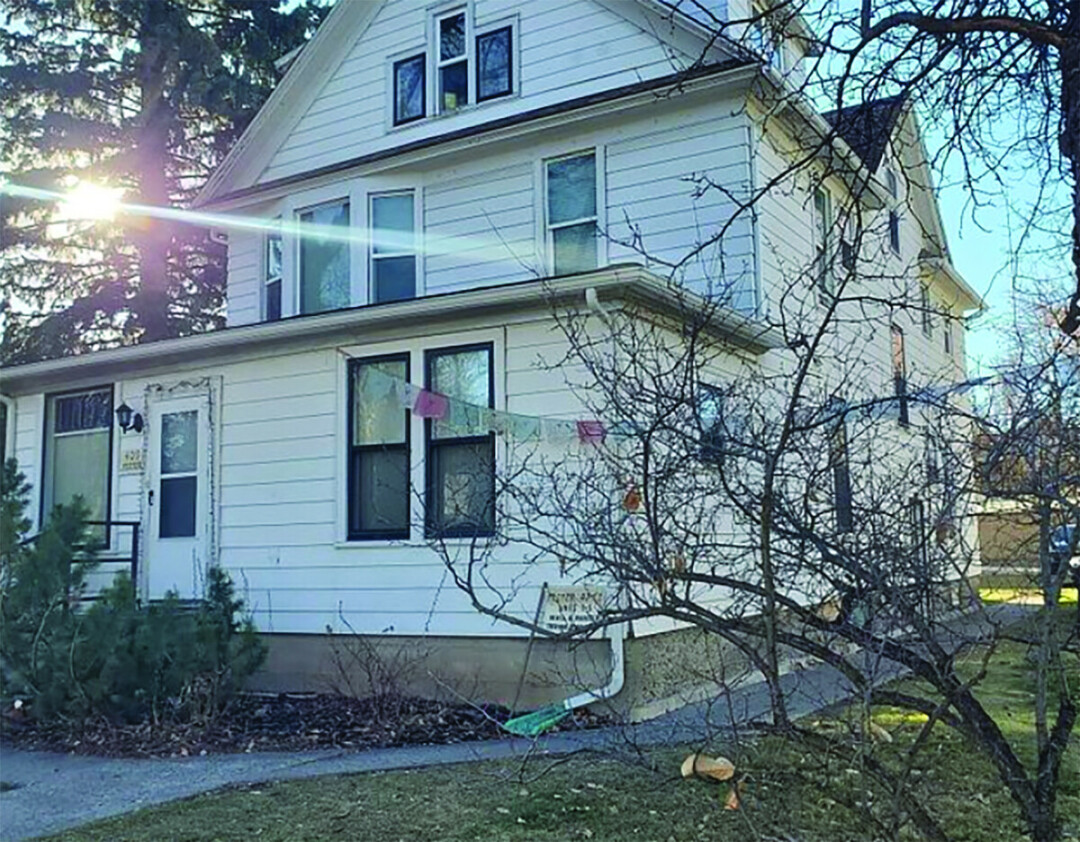
Many of you might recognize this home. It’s located in the Bon Ton Historic District, and is one of the turn-of-the-century homes the City loves to tout as an example of what could be achieved if we upzone the core neighborhoods of Bozeman. Decades ago it was converted into five apartments, all currently occupied. The City suggests allowing homes like this to be converted into multiple apartments will allow for increased density in the core of Bozeman.
What is most likely to happen is the tear down of older homes that are currently rented, in order to be replaced with new, high-end development, leading to gentrification, the loss of current residents, and neighborhood character. In fact, there is no limit on the number of units a developer can put on an R-4 parcel, though they must meet other code provisions. A local policy wonk recently asked me if there were examples I could point to of cities that have upzoned and resulted in the destruction of neighborhood and city character. Walking around town this fall, I realized I don’t have to look elsewhere. Bozeman is already the best example of this!
There are older homes on on both the North and South sides of town that have been replaced with new, higher-end density development.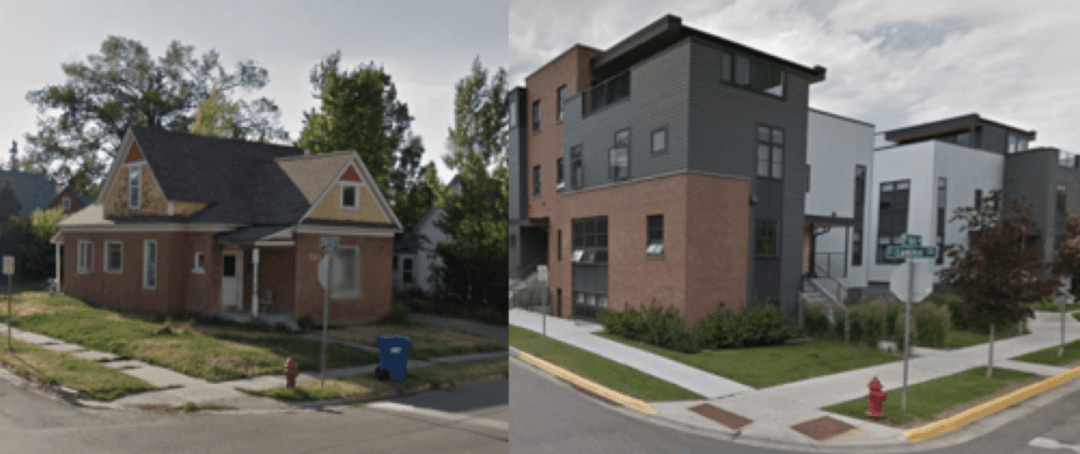
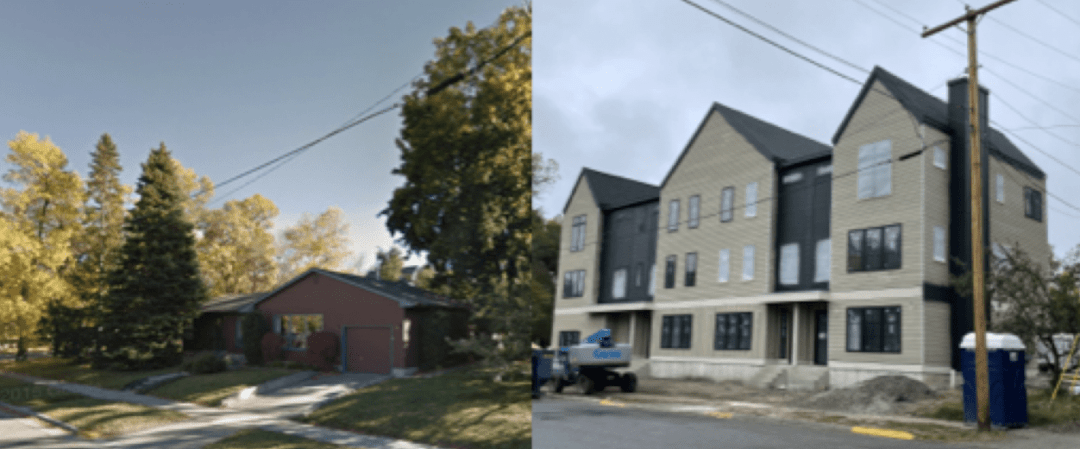
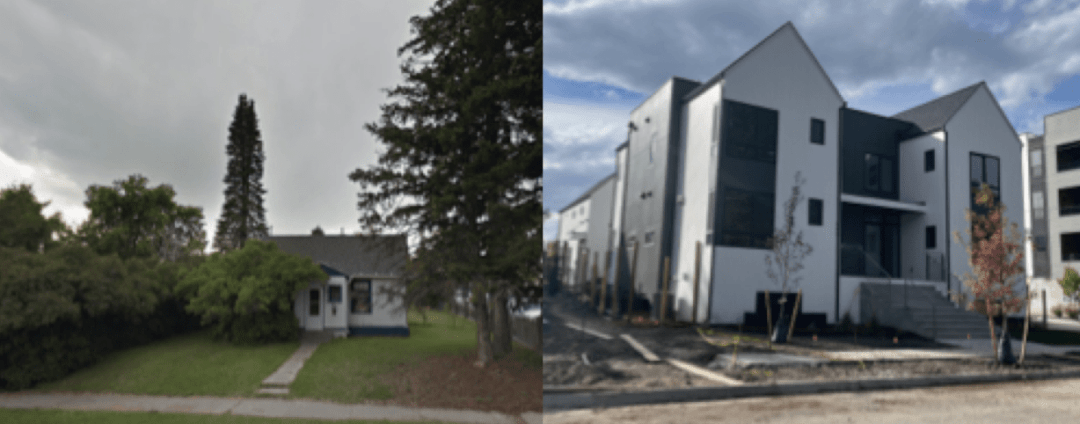


The homes in the before images have all been torn down. They are examples of single-family homes or duplexes that existed in zones with higher density allowed by our current Unified Development Code (UDC). Redevelopment is much more likely to occur if the property is zoned to accommodate more units than what currently exists on the parcel. In Bozeman’s current climate, homes like these are zoned and targeted by developers for tear down.
Upzoning Significantly Increases Land Value
According to Patrick Condon, Professor at the University of British Columbia, and Master of Urban Design, upzoning unleashes irreversible inflationary pressure on land value. Home-buying changes from the search for a place to live and raise a family to speculative land redevelopment. If we increase allowed density across the entire core of Bozeman (upzoning), how many homes will withstand the pressures of redevelopment, including significant rises in property taxes? How many renters will be displaced by new developments that result in the gentrification of our neighborhoods? The local policy wonk mentioned earlier told me that something new, in a great location, will necessarily be expensive. How much of our existing neighborhood character will survive?
The former homes in these pictures were all located within the Neighborhood Conservation Overlay District (NCOD), which was created in 1991 in order to preserve Historic Districts by protecting the surrounding areas between the districts. Neighborhood character was assigned value, and protected. The NCOD is the reason we have the charming central neighborhoods we do today, with 160 years of diverse architectural styles. In our municipal code, the stated purpose of the NCOD is to “stimulate the restoration and rehabilitation of structures and all other elements contributing to the character and fabric of established residential neighborhoods and commercial or industrial areas.”
For various reasons, the NCOD hasn’t been fulfilling its mission to protect neighborhood character in recent years, much less stimulating restoration. It doesn’t even protect structures from tear down. Recently, in a staff presentation to the Community Development Board, Chris Saunders stated that homes within the NCOD can be torn down after “two years-and-one-day” from an initial demolition request. NCOD regulations have been continually undermined, and are now rarely applied by planning staff at an administrative level. Many projects never see a public review.
In 2015, the City Commission passed ordinance 4598, which removed a requirement for new construction to maintain “block character” within the NCOD. This requirement was seen as an impediment to the redevelopment of certain downtown areas. What has resulted is the degradation and erosion of neighborhood character. Looking at this image, you wouldn’t think you were in central historic Bozeman, but you are.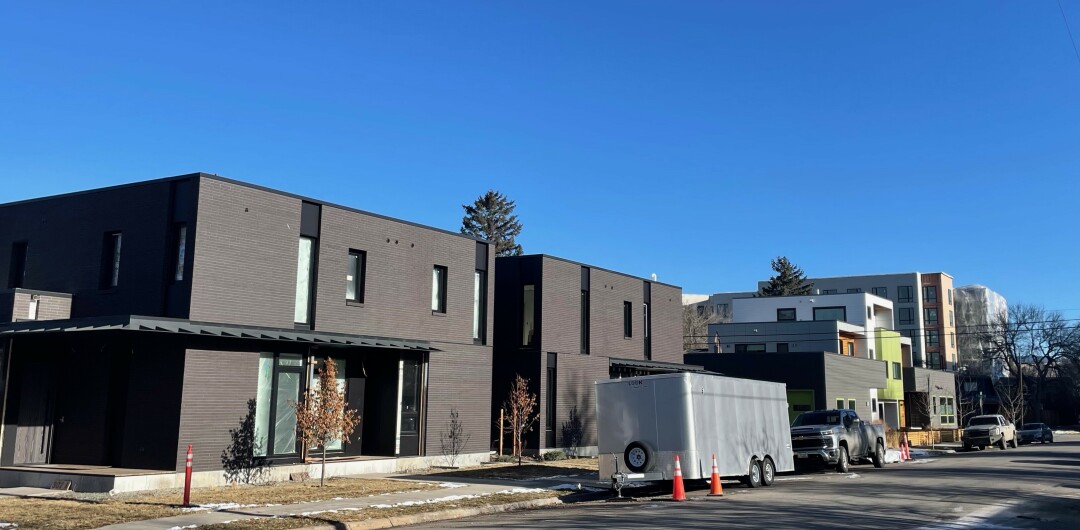
In 2019, the City paid Bendon Adams LLC and Orion Planning + Design to “conduct public engagement to best understand the community’s needs and preferences regarding historic preservation, the Neighborhood Conservation Overlay District, and historic district boundaries and future development.” They issued the Final NCOD Policy Direction Report that year.
This is an exceptional report that I recommend spending some time to read! It states again and again how residents value the historic districts and the NCOD, and have major concerns with the mass and scale of new development degrading the fabric of existing neighborhoods. The city commission adopted the plan, but then Covid hit, and nothing from the report was ever codified in the UDC!
After five years of further NCOD decline, we now have a new group of consultants on the scene, Community Planning Collaborative (CPC). The Bendon Adams report was listed as a guiding document in their work. Since we know Bozeman residents still value the historic districts, the NCOD, and neighborhood character, will these consultants be able to help us put the teeth back into the NCOD with actual codes? While concerns over the mass and scale of new development have increased exponentially, will the CPC be able to down-zone the historic districts, as suggested in the report?
If historic preservation, protecting neighborhood character, and avoiding gentrification are not argument enough against upzoning the central neighborhoods of Bozeman, sustainability should be.
The Preservation-Sustainability Nexus
In her 2018 book, Building Reuse, Kathryn Rogers Merlino suggests that preservation and sustainability go hand in hand. “Increasingly, research has supported this statement — the reuse and sustainable renovation of existing buildings can result in fewer adverse environmental impacts than sustainable, or green, new construction.” The idea is that scrapping an existing building to construct even the greenest new development creates a huge carbon footprint, as the existing building represents an enormous amount of embodied energy. She goes on to state that “to create truly sustainable buildings, it is essential for designers and builders to change the way they look at existing and historic buildings, to see them not as obstacles to be removed, but as opportunities to apply new technologies and new purpose.”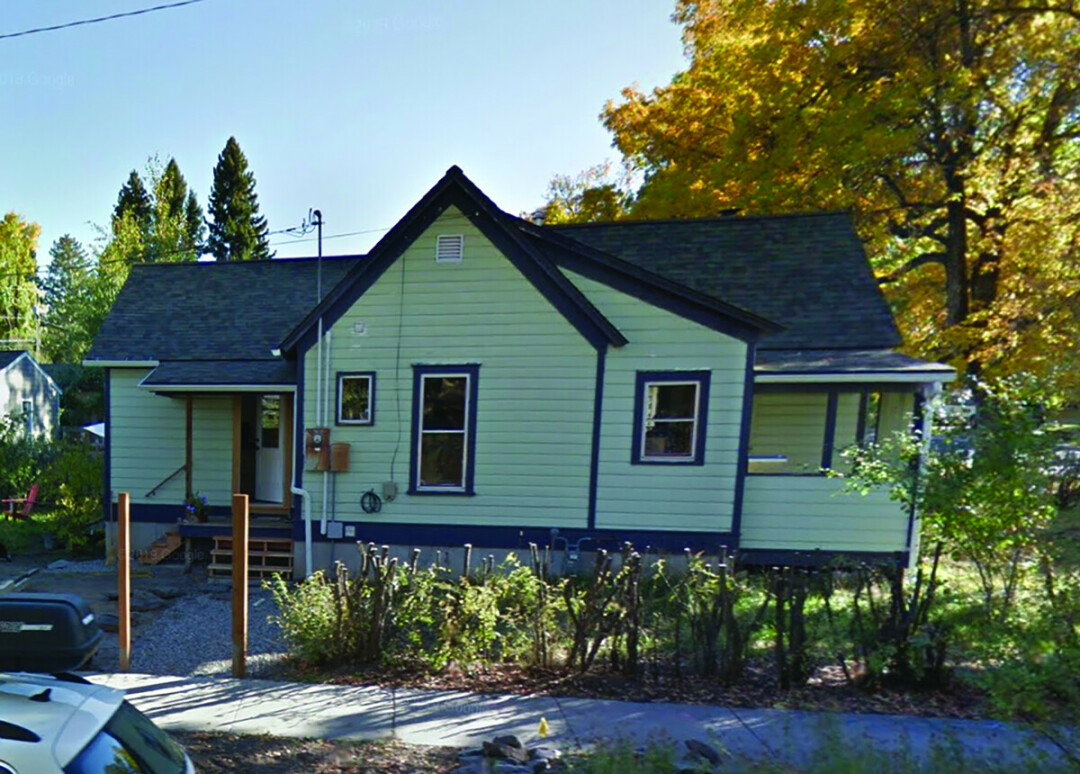
For years I lived next door to this house (above). It was old, small, out of square, and the resident owners were outgrowing the space.
A local contractor lifted the home and installed a proper foundation, thereby doubling the square footage of livable space by working below grade. This contractor has done several similar projects within the NCOD, and the result is modern living space without disturbance to the fabric of the neighborhood. It also avoided many tons of waste going to our landfill. Maybe the economics of this don’t make sense for speculative land development; a developer isn’t going to turn a profit on this, but the homeowner achieves their goal of more living space with far less environmental impact than a tear down.
This brings me back to the Bon Ton home. Will the turn-of-the-century home featured in the real estate ad be another demolished upzoning casualty, and its renters added to the list of the displaced? The home did sell, and since there isn’t a limit to the number of units that could be put on that lot, will the owners scrap it for new development (at a healthy profit), or reinvest in an historic structure to make it an energy efficient building that maintains the fabric and character of the historic district? The current occupants have been assured that their rent is safe for two years. Observing current conditions in Bozeman, my mind immediately suspects “two years-and-one-day”.
